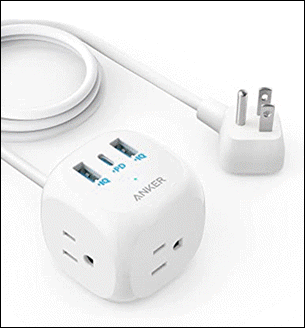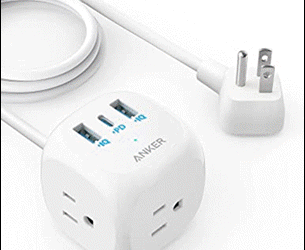David Ludlow
2025-09-20 04:00:00
www.trustedreviews.com
As we start to get a few chilly nights, you might notice an increase in the number of headlines that say something like, “Shoppers rave over cheap gadget that warms home for 13p” or “Silent 45p-per-hour device eliminates cold spots”.
There are many variations on a theme, but every article written in this format always links through to an electric heater and has some very basic maths in there about how cheap the devices are to run.
Only, it’s not as simple as all that and electric heating is, by far, the most expensive way to heat your home.
The hourly running cost isn’t particularly important
All of those kinds of articles will usually have some basic information on how much an electric heater costs to run, but the issue comes down to labelling heaters as cheap to run, without providing any real details.
To work out a device’s running cost, you first need the power consumption in kW, which you can do by dividing the Watt figure by 1000. For example, with a 500W heater, we have 500W / 1000, which gives us 0.5kW.
Electricity is priced per kilowatt hour (kWH). A kWh is equal to one kW of power used for an hour. To convert kW to kWh, you multiply the power consumed by the time in hours. So, to see how much our 500W heater costs per hour we, we have 0.5kw x 1 = 0.5kWh.
Then, to work out how much a device costs to run for an hour, you multiply the current unit price per kWh of electricity (currently, 25.73p per kWh on the energy cap. In our example, 0.5kWh costs 13p (well, 12.87p rounded up).
You don’t have to do these figures manually; you can use the Sust-it energy calculator instead. Enter a device’s energy consumption in watts (W) or kilowatts (kW), and then the time it’s in use to calculate the running cost.
Back to the heaters, we can say that the 500W heater costs 13p per hour to run. If we had an electric heater with a higher output, then the cost would go up. A 1000W heater costs ~26p per hour to run and a 2000W heater costs ~52p per hour to run.
Often, sites will then multiply that hourly cost by eight to give a daily running cost. On that basis, the 500W heater seems as though it’s cheaper to run, and the 2000W heater seems very expensive, but hourly running costs don’t tell the full picture.
You need to look at the heat output required
When heating a room, the most important thing to do is to stop outputting heat when an ideal temperature is reached, so you’re not wasting power. That’s why we always recommend electric heaters with built-in thermostats, so the heater turns off when the target temperature is reached, and comes back when the temperature drops. Using a thermostat reduces the amount of time that a heater is on for: you won’t ever have to run an electric heater for eight hours solid.
What’s more important is the amount of energy required to heat a room to the desired temperature. Heating a room requires more heat to be put in it than is naturally lost, such as through walls and windows.
To reach a certain temperature, such as 18°C, a specific amount of heat energy is required. The most basic difference, assuming a perfectly insulated room, is how quickly you reach the temperature.
A 500W heater might take an hour to get a room to the target temperature, but a 1000W heater would do it in 30 minutes, and a 2000W heater would do it in 15 minutes. Work those running costs out, and all electric heaters will cost the same to heat a room to a specific temperature.

Similarly, kettles might have different power ratings, but the difference comes down to how quickly they boil water, not how much energy they consume.
So, why have different types of heaters? The difference is because in our simple example, we’re assuming that there’s no natural heat loss. In a real home, heaters also need to account for heat loss, and low-power heaters won’t be suitable for larger rooms.
Remember, a room can only increase in temperature if more heat is added than is lost, and a 500W heater will struggle in larger rooms to heat at all, or could be extremely slow to increase the temperature, which would actually increase running costs as it would need to run for longer.
Conversely, a very powerful electric heater may be overkill for a smaller room, and you risk overshooting the target temperature, effectively wasting the heat output.
As a good example, Electricpoint has a heating table that shows how much heating you need based on various factors. For example, a 12m² living room with insulated cavity walls and one external wall needs a 1.12kW heater; the same size room with solid walls instead needs 1.84kW. In both cases, you need to pick a heater close to, but above, the required heating level.
In short, it’s not the hourly running cost that’s important, but getting a heater that’s appropriately sized for the room that it will be used in.
What about the type and efficiency of a heater?
Another thing that basic articles go on about is the efficiency of electric heaters. This really isn’t important, as all electric heaters are almost 100% efficient, meaning they convert almost all of the electrical input into heat.
There are three main types of standard electric heaters: convection, fan and oil-filled. I’m not covering infrared heating here, as it works more like the sun, directly heating objects, rather than warming the air.
The most basic type of electric heating is a convection heater. This has a heating element: cold air passes over this and is warmed, with convection causing air circulation. A fan heater works in a similar way, but uses a fan to circulate the hot air. Both types of heaters warm a room relatively fast, but the air will cool just as quickly when the heater turns off.
Then there are oil-filled radiators, which use a heater to warm the oil inside. These heaters warm up slowly, but cool slowly, too, so there can be a more comfortable heating curve, similar to how a wet radiator heats a room.
Ultimately, the type’s not that important, and all electric heaters will cost roughly the same amount to heat a space, assuming they’re correctly sized.
So, are electric heaters cheap to run or not?
At near-on 100% efficiency, you’d think that electric heating would be cheap to run, but that’s far from the case, as electricity is a lot more expensive per kWh than gas. What we can do is compare electric heating vs gas for an average UK home.
According to OfGem, a typical medium-use house uses 11,500kWh of gas per year for heating and hot water. According to recent government research, UK homes use 18% of heat demand for hot water.
If we remove the hot water part (18%) we’re left with 9430kWh of gas for heating (the 82% left). Given the current gas price of 6.33p per kWh, that’s £596.92 per year spent on heating an average home.
If we’re being generous, a gas boiler is 90% efficient (many are less than this), which means that for every 1kWh of gas consumed, only 0.9kWh of heat is generated. So, from the 9403kWh of gas consumed, 8487kWh of heat is generated.
As electric heaters are almost 100% efficient, that means that they’ll consume 8487kWh of power for the same heat output as a gas boiler. As electricity is so expensive (25.73p per kWh), electric heating works out at a yearly running cost of £2183.71 to heat an entire home, assuming appropriately sized electric heaters.
Having solar panels or a time-of-use tariff can reduce those costs but electric radiators are still going to be more expensive to run than gas central heating.
If you were to assume that an average home has seven rooms to heat, with one heater per room, then per-room, electric heating would cost around £311 a year. If you don’t have zoned central heating with smart radiator thermostats, such as with Tado X, where you can heat a single room only, then an electric heater can be cheaper to heat one room when you don’t need or want to heat the entire house. And, electric heating, as it is direct, can help deal with a very cold room by heating it fast.
Electric heating is a simple option for areas where central heating can’t reach, such as an outbuilding.
Overall, traditional electric heaters are not cheap to run, and putting an undersized heater in a room can mean that you’re just throwing away money without really doing much for air temperature. Typically, low-power heaters, such as the De’Longhi Capsule Desk, are useful if you need a bit of direct heating. I find the Capsule Desk useful working in my draughty Victorian home, as it can keep my hands warm while typing; it’s not a heater that’s useful for warming an entire room.


In the right circumstances, then, electric heating can be convenient and useful, and the heaters are cheap to buy. But, the real alternative to gas heating for an entire home is to use a heat pump (either air-to-air or air-to-water, often called air-source), as these work in a different way and are often 350%+ efficient, bringing their running costs closer to those of a gas boiler.
Meet the Anker 20W USB C Power Strip, the ultimate desk power solution! With 9,659 ratings and a stellar 4.6 out of 5 stars, it’s a trusted favorite for its reliability and performance. Over 3K+ units were bought in the past month!
This compact power cube features 3 AC outlets, 2 USB-A ports, and 1 USB-C port to power everything on your desk with ease. Equipped with a 7-point safety system, including fire resistance, circuit-overload protection, and short-circuit protection, it gives you peace of mind. Plus, enjoy super-fast charging for your devices.
Grab this versatile power strip for only $13.99. Buy Now on Amazon!
Help Power Techcratic’s Future – Scan To Support
If Techcratic’s content and insights have helped you, consider giving back by supporting the platform with crypto. Every contribution makes a difference, whether it’s for high-quality content, server maintenance, or future updates. Techcratic is constantly evolving, and your support helps drive that progress.
As a solo operator who wears all the hats, creating content, managing the tech, and running the site, your support allows me to stay focused on delivering valuable resources. Your support keeps everything running smoothly and enables me to continue creating the content you love. I’m deeply grateful for your support, it truly means the world to me! Thank you!
|
BITCOIN
bc1qlszw7elx2qahjwvaryh0tkgg8y68enw30gpvge Scan the QR code with your crypto wallet app |
|
DOGECOIN
D64GwvvYQxFXYyan3oQCrmWfidf6T3JpBA Scan the QR code with your crypto wallet app |
|
ETHEREUM
0xe9BC980DF3d985730dA827996B43E4A62CCBAA7a Scan the QR code with your crypto wallet app |
Please read the Privacy and Security Disclaimer on how Techcratic handles your support.
Disclaimer: As an Amazon Associate, Techcratic may earn from qualifying purchases.








































































































